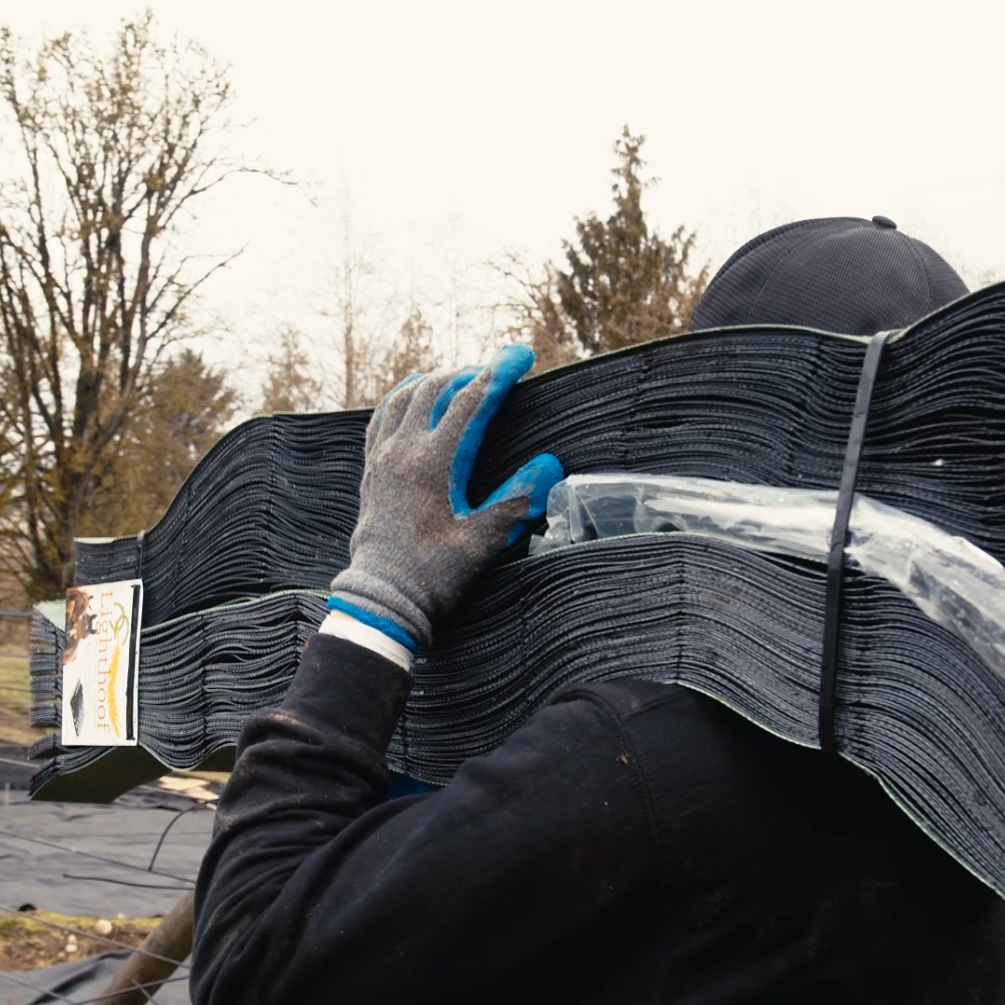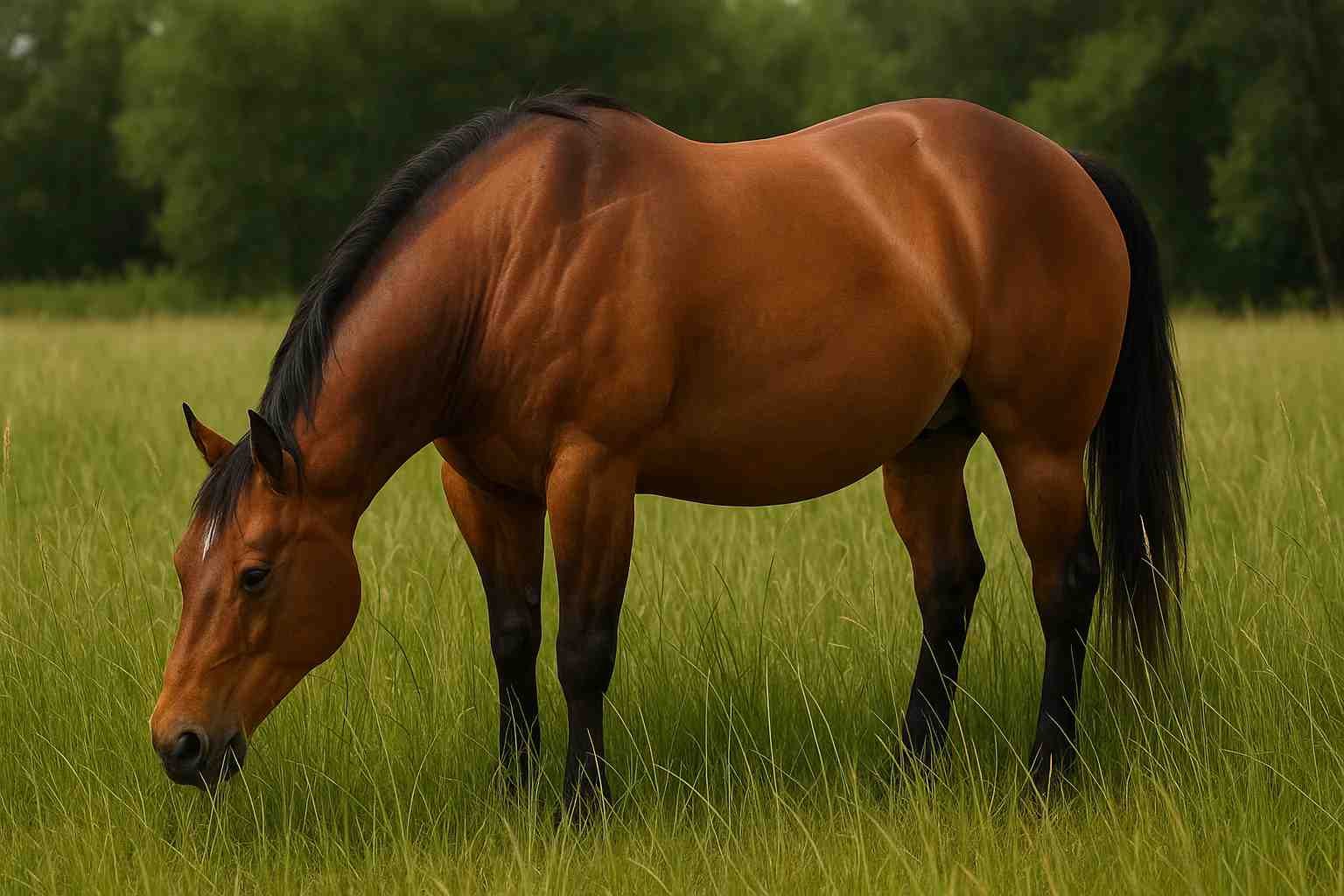Are you wasting thousands of dollars on horse paddock drainage solutions that vanish into the mud? You aren’t alone! My years of experience show the same pattern - drainage systems that fail despite repeated installations and mud that seems to eat gravel year after year.
The common beliefs about horse paddock drainage just don't match reality. I found that there was more to mud problems than just drainage systems in horse pastures. The biggest problem lies beyond water movement. Your carefully installed footing faces constant pressure from 1,000+ pound animals on relatively small hooves that compact and churn the ground.
My experience with muddy boots and unhappy horses and years of experimenting with different strategies taught me a valuable lesson. Horse paddock drainage needs an all-encompassing approach. Budget-friendly solutions must combine water management with ground stabilization to handle the unique challenges horses present.
The fix for your drainage problems could be easier than expected. The key is understanding the impact beneath your horse's hooves. Let's explore the facts about paddock drainage and look at proven solutions that keep horses comfortable in wet conditions.
Why Drainage Alone Doesn’t Solve Mud Problems
Most horse owners believe drain pipes or French drains will fix their muddy paddock problems like magic. But my years of experience have taught me that standing water is only one piece of the problem.
The compaction issue in high-traffic areas
Your horses create a complex physical process the moment they step into their paddock. A horse puts 1000+ pounds of force on the ground when standing still. The force can be much greater in movement and moments of impact. This massive force changes the soil structure underneath.
What happens during this compaction process?
-
The soil particles squeeze together tightly and eliminate air pockets, known as void spaces, which were previously pathways for water
-
Water can't move through its natural pathways anymore
-
Each passing hoof makes the ground denser at the base while creating unevenness and instability at the surface
-
The soil profile absorbs organic materials deeper
This compaction hits hardest in high-traffic areas like gates, water troughs, and feeding stations. On top of that, hooves keep moving and create a kneading action that mixes manure, hay, and other organic matter into the top soil layer.
These areas become so dense that water won't penetrate, no matter how much drainage you add. The water sits on top or gets trapped in hoof holes instead of soaking through the soil. This creates muddy spots that seem to stay wet forever.
Why water doesn't drain through paddock footing
You might wonder why your expensive buried drainage systems aren't working well. The answer is simple: water needs to reach those drains first.
Picture your paddock surface like your house's roof. Putting gutters in your attic makes no sense if the roof won't let water through. The same thing happens with compacted paddock surfaces - they create a waterproof barrier that blocks moisture from reaching underground drainage.
The mix of manure, urine, and organic debris creates a seal over time. Fine particles from broken-down organic matter fill tiny spaces between soil granules. Then what started as perfectly draining sand or gravel turns into an impermeable layer.
The old "just add more gravel" solution usually fails because:
-
New materials mix with the compacted layer below
-
Clean gravel and muddy soil blend without proper stabilization
-
New material starts getting compacted all over again
This explains why horse owners keep adding new footing materials year after year with no long-term results. Understanding that drainage alone can't fix this basic compaction issue helps create better horse paddock drainage solutions.
The real solution needs more than just moving water away. We need to figure out how to keep the ground stable under the unique pressure horses create. Success comes from mixing proper water management with stabilization techniques that handle hoof pressure over time.
The Myth of Through-Drainage in Horse Paddocks
Many horse owners believe they can solve mud problems by installing paddock footing material that lets water drain through. They spend big money on special "drainage gravel" hoping rainwater will just disappear through their paddock surface.
This approach doesn't work. Let me tell you why through-drainage in horse paddocks is mostly a myth and what really happens under your horses' hooves.
How organic matter clogs permeable surfaces
Horse paddocks create unique challenges that no drainage system can handle well. Even the best permeable surface will turn into an impermeable one because of:
-
Horse manure – These tiny organic materials quickly soak into the spaces between loose gravel (the void spaces) needed for drainage
-
Horse hair – Hair builds up and mixes with other materials that block drainage paths
-
Hay scraps – They break down and pack into small spaces to create a seal
-
Dust and mud – These tiny particles fill every available space
Your paddock footing works like a coffee filter. Water flows through easily at first, but after you use it a few times, fine coffee grounds clog the paper. The same thing happens in paddocks - any material that lets water through will clog up in ways you can't fix.
The ground under muddy areas is often packed down or soaked already. This means water can't drain fast enough through the bottom layer - whatever type of permeable top layer you start with.
What happens next? Water fills your paddock footing "like a dirty swimming pool" instead of draining as planned. The water gets trapped between the packed base and drain layer with nowhere to go. Sometimes it even pushes back up through any spaces left.
Why French drains often fail in paddocks
People often suggest French drains to fix paddock drainage problems. But farm design experts tell you not to use them within horse paddocks for two big reasons:
-
Vulnerability to crushing damage: Horses' hooves push down with massive force (1,500+ pounds per square inch) and can crush underground drainage systems. That's why you don't see French drains in areas where vehicles drive - and horses push down just as hard or harder.
-
Rapid clogging: Horsehair, manure, and organic debris quickly clog French drains in paddocks. Once they're clogged, you'll have a hard time fixing these systems without digging up the whole drain.
Fixing a broken underground drainage system costs more money and causes more disruption than maintaining surface drainage. Open drainage lets you spot problems right away and fix them before they get worse.
The smart approach focuses on proper surface drainage features and ground stabilization instead of chasing the through-drainage myth. Surface water management with open, protected drainage features works better with how horses affect their environment.
Designing for Water Flow and Terrain
The key to fixing paddock mud starts with a basic truth: water follows gravity, nothing else. You can spend a fortune on fancy footing materials, but success depends on how well you tap into your terrain's natural water patterns.
Understanding slope and natural runoff
My first step in checking paddock drainage is watching where rainwater flows naturally. This simple step tells me more than any fancy tests could. Years of experience have taught me that paddock drainage isn't complex—water just runs downhill.
You should map out your paddock's slope and spot the natural low areas before installing any drainage. Watch where water pools after rain and track its path. This knowledge helps you work with nature instead of against it.
These terrain elements shape water movement:
-
Overall slope direction and percentage
-
Natural low points that collect water
-
Existing compacted areas that prevent absorption
-
Runoff patterns from surrounding higher ground
Using swales and berms to redirect water
Once you know your natural water patterns, you can reshape the terrain to direct water where needed. Swales—shallow, gently curved ditches—work best for horse paddocks.
Let's say your barn sits downhill from your paddock. A wide swale uphill of your barn can catch water as it moves down. This setup, known as a curtain drain, protects vulnerable structures. Unlike underground French drains, open swalesdon't get blocked with debris and by using Lighthoof panels through the swale, you can stabilize the banks so the won’t wear down or collapse over time with hoof traffic.
Berms—raised soil areas—work with swales to guide water flow. Together, they create an effective system that moves water away from busy areas while keeping the surface safe for horses.
Avoiding water flow toward barns and shelters
Protecting buildings needs smart terrain changes since water follows gravity. Check if your paddock slopes toward your barn or shelters—this common issue can flood structures and damage foundations.
Complete regrading works best but often isn't possible because of trees, utilities, or costs. Small, targeted terrain changes can still make a big difference in these cases.
I once worked on a paddock where a large cedar tree and electrical lines prevented full regrading. We built a small berm in front of the stall doors and added a 3-foot wide, 18-inch deep swale that was fully lined and supported with Lighthoof. This guided water away from the barn into a wooded downhill area.
Stabilizing these drainage features is vital. Lighthoof panels can follow swale and berm shapes, which stops collapse from hoof traffic and keeps water flowing with minimal upkeep.
Creating a Stable Base That Resists Mud
Image Source: Lighthoof
You don't win the battle against mud just by moving water away. Success comes from building a surface that stays firm whatever the moisture level. My years of paddock management have taught me that ground stability, not just drainage, creates the foundation for mud-free horse areas.
Why ground stability matters more than drainage
Mud forms because unstable ground mixes with water under hoof pressure. Even perfectly graded paddocks become mud pits when water flows over ground that horses' hooves have churned up. Creating mud-free paddocks isn't about getting rid of water. The real solution keeps the ground firm even when it's wet.
A stable, firm surface stops mud from forming even in heavy rain. That's why focusing only on moving water misses a vital part - the ground's strength. My experience shows that fixing stability leads to lasting results while drainage-only fixes keep failing.
Choosing the right gravel and compaction method
A stable paddock needs the right materials and proper installation:
-
Fill Lighthoof panels with angular gravel with a mix of particle sizes, or fines, that lock together after compaction
-
Stay away from rounded pea gravel or drain rock within the Lighthoof panels - they are too shifty which creates an unstable base.
-
Good compaction prevents settling or shifting and locks everything into place
A vibrating plate compactor gives you the best stability. Local rental centers and Home Depots have this equipment. This builds a solid base to handle heavy hoof traffic. The best materials quickly become unstable under a horse's weight without proper compaction and a stability solution like Lighthoof to hold it in place.
How Lighthoof panels help maintain footing
Traditional paddock installations break down as time passes, even with the right materials and compaction. Stabilization panels make all the difference here. Lighthoof's flexible cells work like a skeleton that keeps gravel compressed by stopping sideways movement under hoof pressure.
These panels lock together and follow the ground's shape while creating spaces that hold gravel in place. They flex without breaking as horses walk over them, unlike rigid materials. The panels also stop erosion during storms by keeping the gravel layer solid - water flows across without washing away your investment.
Learn more about using Lighthoof as part of your paddock drainage strategy.
This approach stands out because it lasts. Good gravel, solid compaction, and cell stabilization work together to create a surface that stays firm year after year. It handles the extreme pressure from horses' hooves. The surface remains stable and mud-free during long wet spells, while traditional methods need constant fixes and more gravel.
Long-Term Drainage Solutions That Work
Horse paddock drainage needs some thoughtful but simple planning to avoid continuous maintenance situation. My experience with equine facility design and maintenance showed me that successful solutions for muddy paddocks must handle both water flow and ground stability at the same time.
Combining surface drainage with erosion control
Surface drainage and erosion control complement each other perfectly. Managing horse properties has taught me that unstable ground quickly loses valuable footing material when water flows across it.
A successful system needs to:
-
Direct water away from critical areas through surface channels and/or the natural grade
-
Keep the ground stable as water moves to prevent pooling and facilitate water movement
-
Preserve footing during heavy rain by protecting it from erosion
Stabilization panels paired with surface drainage features provide an ideal solution. These panels adapt to natural swale contours and protect their edges from erosion. Your expensive gravel stays in place while water flows across properly reinforced terrain.
When to use open drainage vs. subsurface systems
Horse environments benefit more from open drainage features like swales and ditches than subsurface systems. These economical solutions come with several benefits:
You can see how well your open drainage is working with a quick visual check. Hoof traffic won't crush these features like it does with subsurface systems. They also avoid the clogging issues that happen when horsehair, manure, and hay debris get into underground drains.
French drains and other subsurface systems work best in areas horses can't reach. Wide, shallow swales make better choices for horse-accessible areas. Horses can cross these safely while the water still flows where needed.
Tips for maintaining your drainage setup
Your drainage system needs regular checks to work its best:
-
Look at swales after heavy rains to check water flow
-
Make sure water is running to an acceptable location, ideally with vegetation to absorb it
-
Watch for erosion signs along drainage paths and add gravel or larger stones to slow the flow as needed
-
Make sure water flows away from buildings and high-traffic spots
Paddocks with Lighthoof stabilization panels need less maintenance because structured cells keep drainage features intact. You can learn more about using Lighthoof as part of your drainage strategy.
Note that organic matter, I’m talking about manure, will build up in any drainage system. Open, stabilized channels stay functional longer than traditional subsurface options and need minimal attention to keep working well.
Conclusion
Horse paddock drainage needs a complete mindset move away from traditional solutions. My experience battling mud and trying to help frustrated horses taught me that drainage alone fails. It only addresses half the problem. Water management matters, but ground stability under intense hoof pressure determines if your paddock becomes a mud pit or stays firm underfoot.
Your horses' hooves transform any paddock surface through immense pressure. Their compaction combined with organic matter creates an almost waterproof barrier. Even the best drainage systems can't function properly through this barrier. Successful paddock management should work with this reality rather than fight it.
Surface drainage features like swales and berms direct water away from key areas. These avoid the crushing damage and clogging that plague subsurface systems. Pairing them with proper ground stabilization using angular gravel and panels like Lighthoof creates a paddock that stays mud-free whatever the weather.
A dry, stable paddock starts with watching how water moves naturally across your property. Water follows gravity, not your priorities. Designing drainage that works with your terrain instead of against it saves time and money.
Maintenance plays a significant role. Regular checks of drainage features will give a system that works year after year. Stabilized systems need a lot less maintenance than traditional approaches that require constant replenishment.
Your horses need a paddock that stays firm underfoot even in the wettest seasons. Creating this doesn't need complex engineering—just understanding how water, ground, and hooves interact. Smart water management combined with proper ground stabilization creates an eco-friendly solution that works for years.
FAQs
Q1. How can I improve drainage in my horse paddock? Improve drainage by creating high-traffic pads in compacted areas, constructing swales to redirect water flow, and using vegetation to absorb moisture and prevent erosion. Combine these methods with proper ground stabilization techniques for best results.
Q2. What are effective solutions for fixing muddy horse paddock areas? To fix muddy areas, focus on creating a stable base by installing Lighthoof panels with angular gravel and proper compaction. Divert water away from problem areas using surface drainage features like swales and berms. Regular manure management is also crucial.
Q3. What's the best material to use as fill or footing for a horse paddock? The ideal fill for a horse paddock is 3/8-1/2-inch crushed gravel with fines within Lighthoof panels. This combination provides stability, packs well, and resists shifting under hoof pressure. Use a compactor for best results and consider topping with a layer of sand or other inorganic material in specific areas for horse comfort when napping or rolling.
Q4. How can I dry up a wet paddock quickly? To dry up a wet paddock, implement surface drainage solutions like open drains or swales. These features quickly remove surface water when installed correctly. Combine this approach with proper grading and ground stabilization to prevent future water accumulation.
Q5. Why don't traditional drainage methods work well in horse paddocks? Traditional drainage methods often fail in horse paddocks due to soil compaction from hoof traffic and the accumulation of organic matter. These factors create an almost impermeable layer that prevents water from reaching subsurface drains. Surface drainage combined with ground stabilization is typically more effective.





Leave a comment
This site is protected by hCaptcha and the hCaptcha Privacy Policy and Terms of Service apply.